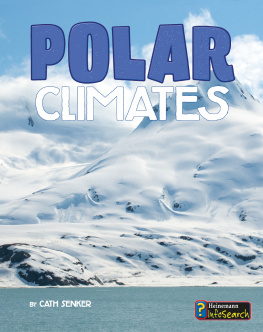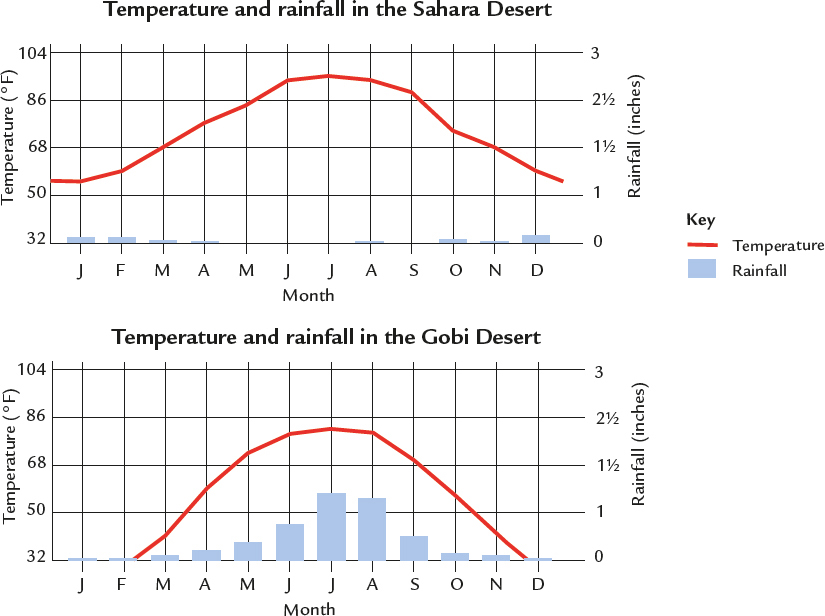change in order to survive; a change in an animal or plant is called an adaptationcommunity of animals or plants of one kind living close togetherrotted animal or vegetable waste that helps to make the soil fertile and good for growing cropsperiod when there is a lack of rain, leading to a shortage of waterwearing away of rock or soil by wind, water, ice, or sandchange from a liquid to a gas by adding heat to the liquid for example, water turning into water vapor in the airsell to other countriesgood for the growth of cropsfuel such as coal or oil, which was formed over millions of years from the remains of animals or plantsslow increase in the overall temperature of Earths atmosphereone of the original peoples of a landto water crops because there is not enough rain for them to grow welldistance of a place north or south of the Equatorfind your way using maps or using the Sun and features in the landscapesomeone who moves from place to place in search of grazing land for animalssubstance that is vital for a plant or animal to live and growfertile spot in a desert where water is found; the plural of oasis is oasessource of energy that does not run out, such as solar powerlake where water is storedsystem of drains to take away waste from homes and buildingsplant with thick, fleshy leaves or stems adapted to storing waterway of doing things that does not destroy natural resourcesarea between the Tropic of Cancer, north of the Equator, and the Tropic of Capricorn, south of the Equatorbed or valley of a stream in regions of southwestern Asia and northern Africa that is usually dry, except during the rainy season
When most people think of a desert, they probably think of a wide expanse of sand in boiling-hot sunshine. Many deserts are indeed hot. But some are cold places. A desert is a large area of extremely dry land. Any place with less than 10 inches (25 centimeters) of precipitation (rain or snow) a year is classified as a desert.
The Negev is a rocky desert in Israel.
Most hot deserts are at low around the Equator up to about 30 north and south, near the Tropic of Cancer and the Tropic of Capricorn. They include the Sahara in northern Africa, the Kalahari in southwestern Africa, and the Victoria of Australia. Deserts cover a large area of Saudi Arabia and stretch to Iran, Pakistan, and western India. In Baja California and the interior of Mexico in North America, there are deserts too, while South America has the Atacama Desert.
This map shows the desert regions of the world.
AMAZING FACT:
Deserts cover about one-fifth of Earths land and are found on every continent.
COLD DESERTS
Cold deserts form at higher latitudes in central Asia, western North America, southeastern South America, and southern Australia. They include the Patagonian Desert in South America, the Taklamakan in China, and the Gobi in Asia. Believe it or not, frozen Antarctica is a desert!
DESERT LIFE
Deserts might seem lifeless at first, but there are plants, animals, and even people living in these regions. Various kinds of peoples have a traditional way of life, while others have settled in desert cities.
What is a Desert Climate?
Desert climates vary. Deserts can be cold at night, cold deserts are sometimes warm, and some have more rain than others.
SWELTERING HEAT
Hot deserts are the driest and hottest places on Earth. During the afternoon, temperatures can reach a scorching 122 degrees Fahrenheit (50 degrees Celsius) or higher. That is seriously hot! Deserts are hot because of the lack of water. The Sun shines on the ground and heats it. The heat rises into the air.
These graphs show the temperature and rainfall in the hot Sahara Desert and the cold Gobi Desert.
AMAZING FACT:
The record for the highest temperature in the world is held by Greenland Ranch in Death Valley, California. It hit a scorching 134F (56.7C) on July 10, 1913.
RARE RAIN
Hot deserts have hardly any rain. Why is there so little? As air at the Equator rises and cools, the water vapor in the air condenses, turning into water drops. The water drops form clouds and fall as rain over the tropical regions. The air moves north and south to about 30 latitude on either side of the .
DID YOU KNOW?
At night, even hot deserts can be cold. With little vegetation and no clouds in the sky, much of the daytime heat quickly escapes into space after sunset. The temperature drops dramatically.
SUDDEN DOWNPOURS
Desert rainfall is extremely unpredictable. Some years, it doesnt rain at all. When it does rain, sometimes all the years rain arrives in just a few days or even on one day.
One of the driest places on Earth is the Atacama Desert in Chile, South America. In the northern town of Arica, Chile, an average of less than 0.02 inch (0.05 cm) of rain falls each year. But in October 2015, a downpour of 0.9 inch (2.3 cm) of rain fell in one day. Flower seeds that had been buried in the ground for years began to grow. The desert bloomed with brightly colored blossoms. This only happens about every five to ten years.
The flowers in the Atacama Desert in Chile last for only a very brief time.
DID YOU KNOW?
The largest hot desert is the Sahara, in Africa. The largest cold (non-polar) desert is the Gobi, in Asia. Sahara and Gobi both mean desert in the local languages so they are both called desert desert in English!
MORE RAIN
In contrast to the Atacama and most other deserts, the Sonoran Desert in North America has more rainfall. It is still dry and hot, but it has a lot more vegetation and wildlife than other desert regions.
A PLACE OF EXTREMES
For extremes of hot and cold, check out the Gobi Desert. In this cold desert, winter temperatures plunge to an average low of 40F (40C). Thats way too cold to step outdoors for very long. Winters are long and cold, and the temperature remains below freezing for much of the year. Yet the summer is unbearably hot and dry, with temperatures hitting 113F (45C) in July.





















